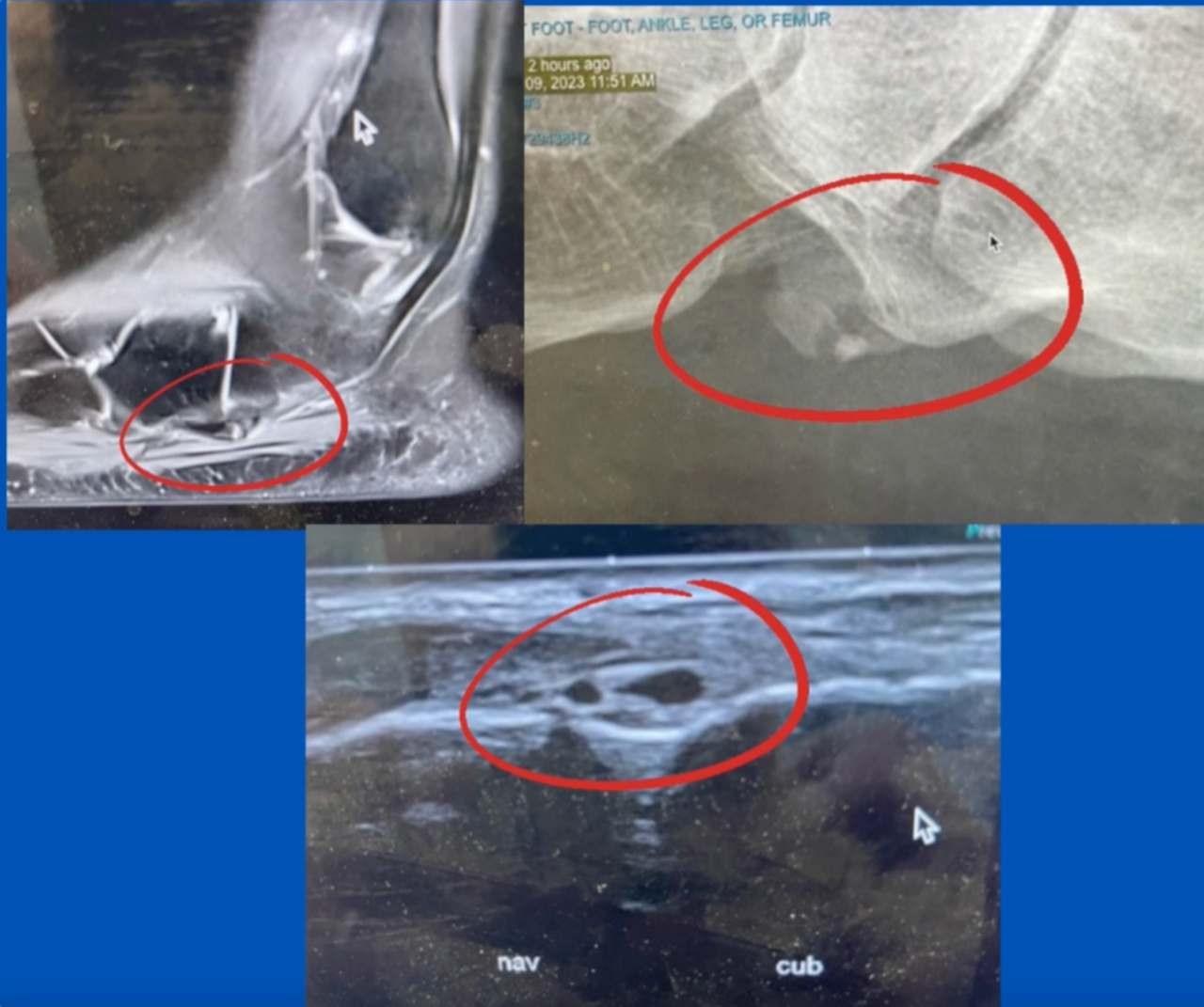Approximately 10% of the population have Os Peroneum, an accessory bone in the peroneus longus tendon. It is typically located adjacent to the cuboid as the tendon delves into the plantar foot.
Most of these are asymptomatic, but, in certain situations, they can lead to symptoms. Symptoms may occur when the fibrous attachments to the tendon can be traumatised, when the bone is large and rubs on adjacent structures or, in this case, where the bone is bipartite.
When the bone is bipartite, the fibrous syndesmosis between the two ossicles can be a weak spot that may tear. Once torn, it is hard for the spot to heal as it is constantly being pulled apart by normal tendon function.
In the images, you can see the size and location, and particularly in the MRI, the slight tendinopathy in the tendon around the ossicle.
This case has remained symptomatic for an extended period, even with multiple treatment modalities being attempted, impacting daily function and sporting activities.
Due to the patient’s high level of sporting prowess, they are keen to move to surgery as soon as possible. The bones will be removed and the tendon repaired.
If you have any specific questions or would like to discuss similar cases, feel free to contact me.
Also read:
Fractured bone spur
Posterior heel pain
Is it posterior tibial tendon dysfunction?
(This content is intended for healthcare professionals only)

